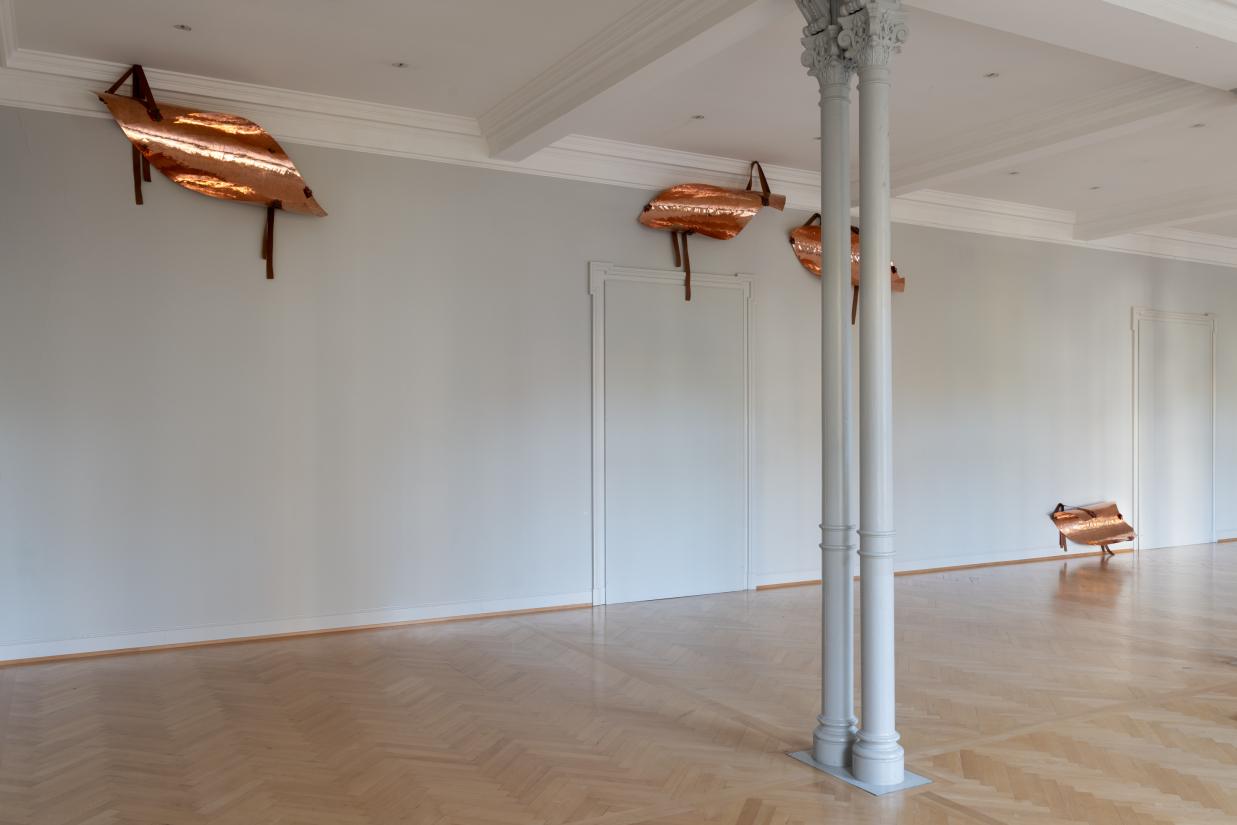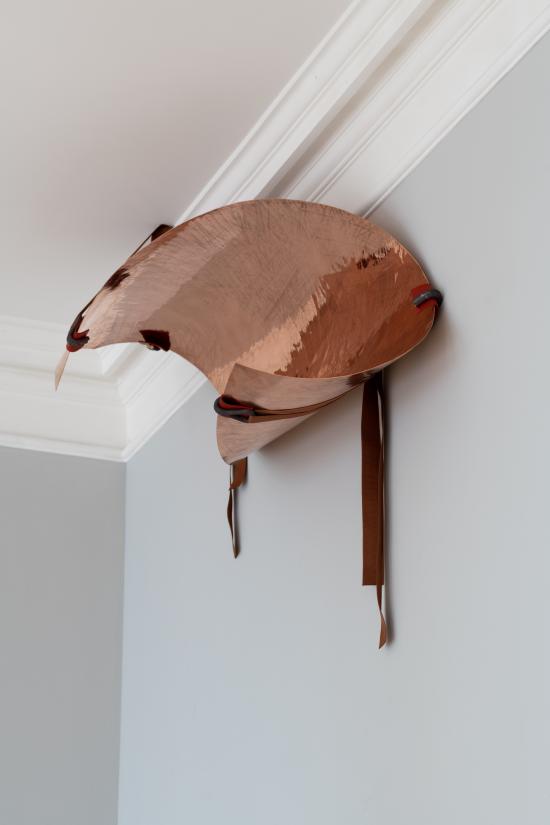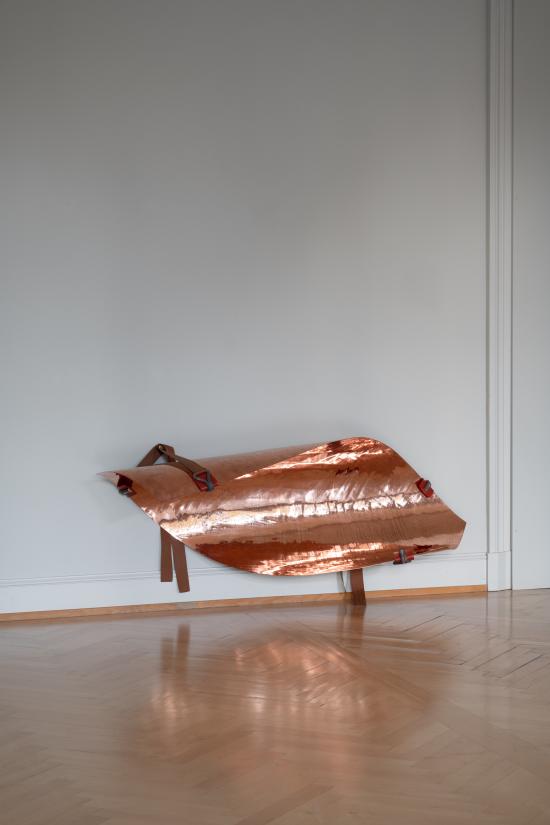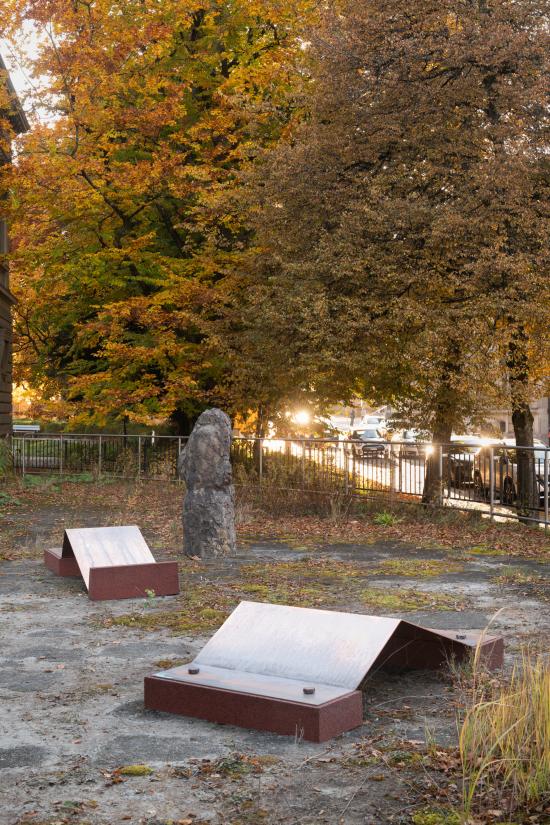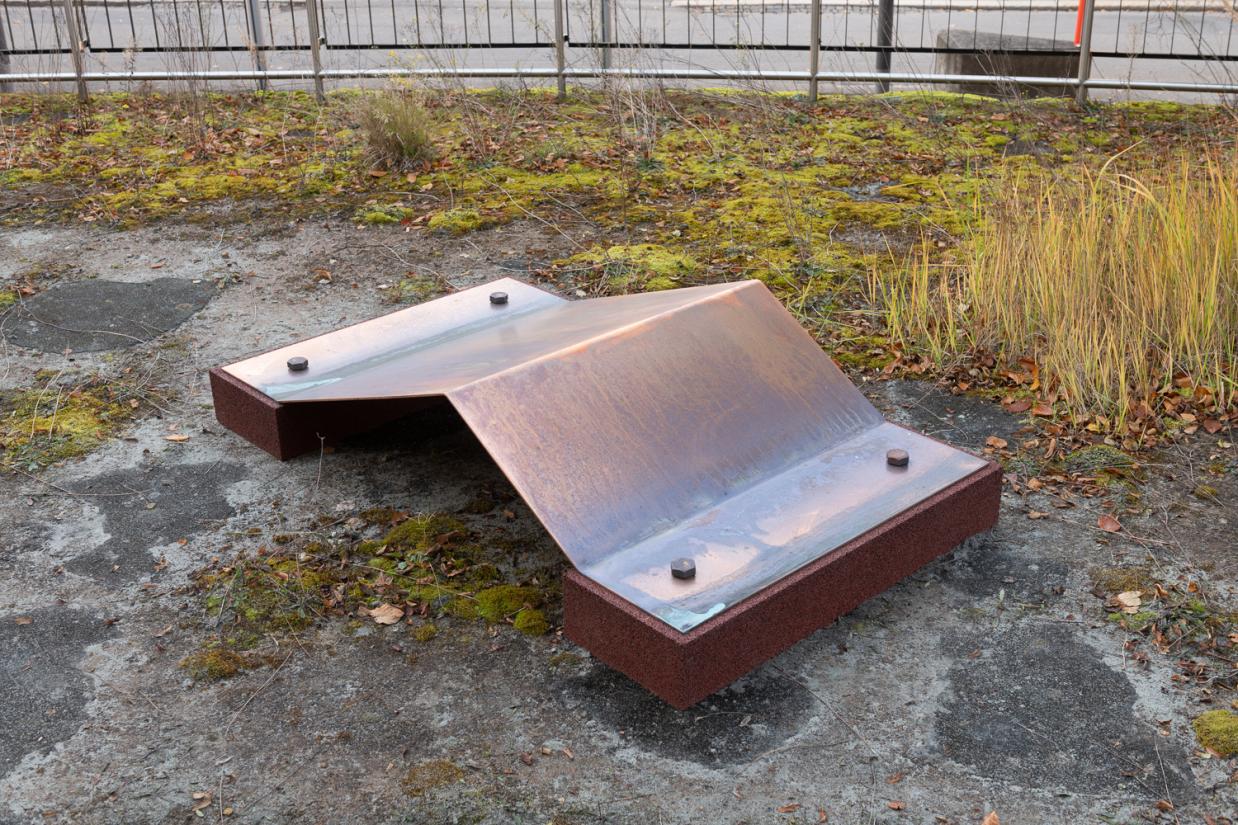The most recent manifestations of Danish sculptor Marie Lund’s spatial approach are her copper pieces Sills and The Stretch, 2021.
While the copper still appears soft and malleable in Sills, which is directly installed up against the ceiling and columns in the room, The Stretch leans into the weight of its material, meticulously and firmly moored on an asphalt-paved outdoor site.
Both pieces were part of Marie Lund’s solo exhibition at the Swiss art museum Kunstmuseum St. Gallen and have now been included in the museum’s permanent collection with support from the New Carlsberg Foundation.
Copper curves
Like a windowsill, the organic copper curves of Sills highlight the transitions in the room.
The piece consists of four components: four copper sheets that have been heated and twisted to take on a fluid character, as they climb up the ceiling and walls of the exhibition space, almost like a living creature.
Flat rubber straps hang off the curved edges of the copper sheets. Like the seam in a piece of textile, the straps attach the copper sheets to the wall while also suggesting the potential dissolution of this attachment.
The four copper forms are all placed in the outer edges of the exhibition space. This expands the viewer’s field of vision by drawing our gaze to the margins and revealing an unutilized, open space.
Leaning into the stretch
The outdoor piece The Stretch is a sculptural investigation of the volume of a sheet: the transition between the flat plane and the form that creates new spaces underneath.
The installation consists of two sculptures, each constructed of two transverse copper sheets joined together at a sharp angle. This creates the shape of a flat spring reminiscent of an industrial component. On the sturdy bronze feet, two rubber screws seem to help keep the sculptures firmly in place on the asphalt surface.
Despite the rugged expression of The Stretch, the pieces convey an inner spatial tension and a sense of playfulness. They show clear signs of the creative process in the form of tool marks and hand prints on the copper surface. However permanent and stringent the copper sculptures might seem at first glance, upon closer inspection, they have a clearly processual and organic appearance.
Kunstmuseum St. Gallen
The Kunstmuseum St. Gallen has a strong position in the Central European art scene. The museum, located in north-eastern Switzerland, is housed in a neoclassicist building designed by architect Johann Christoph Kunkler and completed in 1877.
The museum is home to a vast collection of European paintings and sculptures from the late Middle Ages to the present day. In recent years, the museum has earned international acclaim as a strong venue for contemporary art with an ambitious exhibition programme.
About Marie Lund
Marie Lund (b. 1976, Copenhagen) takes a poetic approach to sculpture as a site of material transformation and expressions of form. Marie Lund’s art draws mainly on natural materials, such as textile, copper and bronze, combined with found objects. In her transformation of these elements, she often allows the traces of her working process to remain visible and invites us into the materials’ interactive dialogue with the world they inhabit.
Marie Lund lives and works in London. Her works have previously been presented in solo exhibitions at Holstebro Kunstmuseum, Museo Marino Marini in Florence and Badischer Kustverein in Karlsruhe and as part of group exhibitions at Palais de Tokyo in Paris and Tate Britain in London, among other venues.
